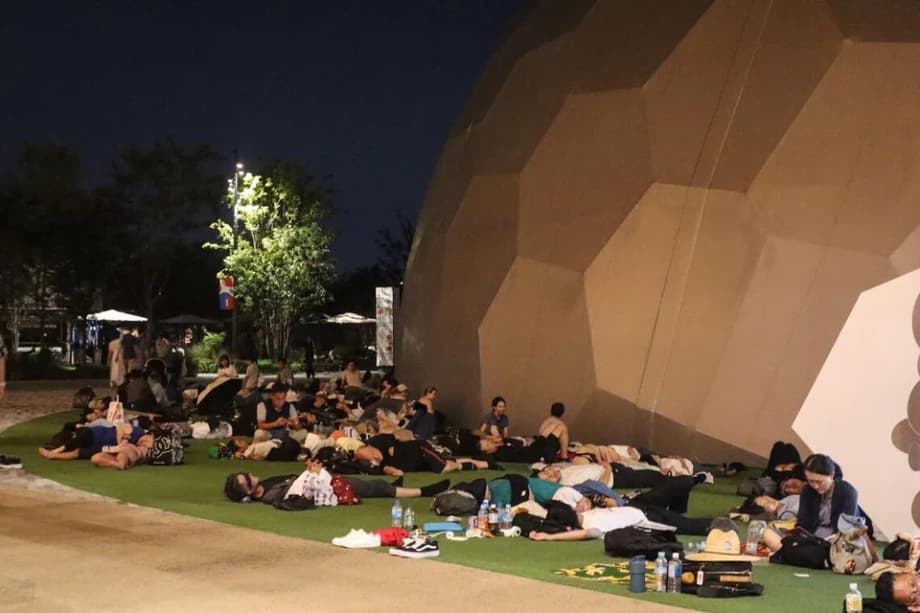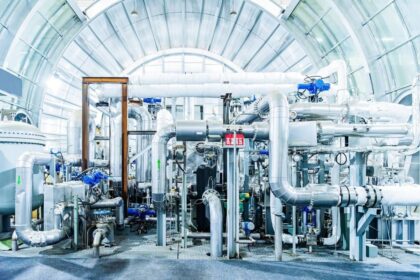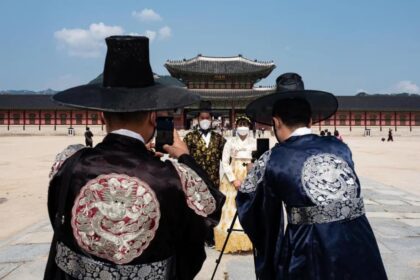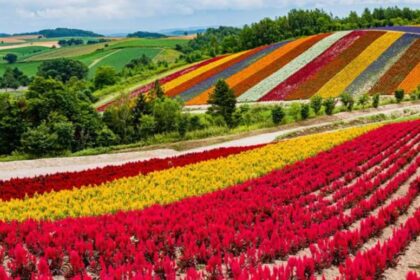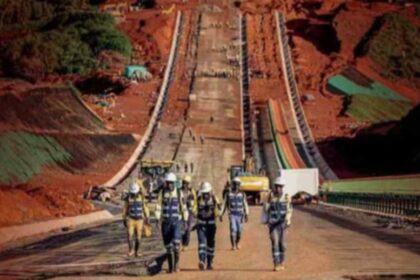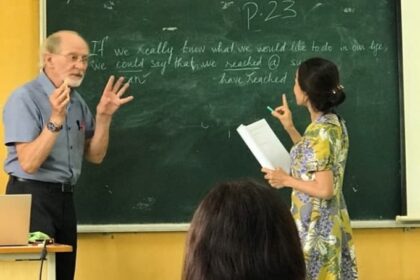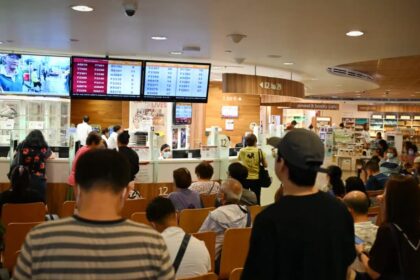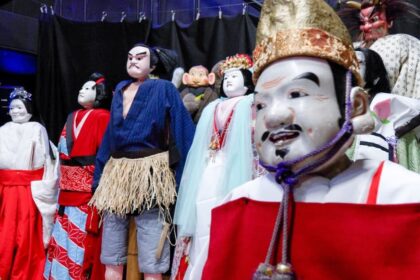A six month showcase reaches the finish line
Japan brought down the curtain on World Expo 2025 in Osaka on Oct 13 after six months that began with low expectations and a few early headaches, then closed with packed pavilions and a celebratory mood. Organizers said more than 27 million people visited the site on Yumeshima, an artificial island in Osaka Bay. Strong ticket sales and robust demand across the final weeks helped push the event toward a likely profit of at least 23 billion yen. The global fair opened under the theme Designing Future Society for Our Lives, with sub themes focused on saving lives, empowering lives, and connecting lives. On show were headline grabbing pieces, from a fragment of Mars and a beating heart grown from stem cells to playful Hello Kitty figures formed from algae.
- A six month showcase reaches the finish line
- What made the Osaka Expo stand out
- Grand Ring stirs a preservation push
- Crowds, ticket sales and operations
- Setbacks that tested the organizers
- Technology on display and why it matters
- Country pavilions brought culture and trade
- Investment deals and business outcomes
- What happens to the site now
- How the Expo fits into a wider arc
- The Bottom Line
Across 155 hectares, around 160 countries and regions, international organizations, companies and civic groups brought technology showcases, cultural programs and food to a compact walkable site. The centerpiece, the Grand Ring, encircled the grounds with a sweeping 20 meter high timber roof, the largest wooden structure ever built. Visitors moved between three main districts that blended performance spaces, water features and green seating areas. Families lined up for interactive exhibits and drone shows, while Myaku Myaku, the colorful official mascot, became a favorite photo stop and souvenir theme.
The Osaka fair was the city’s second outing as host, following a milestone Expo in 1970. The 2025 edition brought World Expos back to the usual five year cadence after the pandemic delayed the Dubai event that closed in 2022. The next World Expo is scheduled for Riyadh, Saudi Arabia. It is slated to run from late 2030 into 2031.
What made the Osaka Expo stand out
In planning and execution, the Osaka Expo leaned into the idea of a People’s Living Lab. The site functioned as both exhibition and experiment, with hands on demonstrations of future mobility, clean energy and digital services woven into the visitor journey. Pavilion World, Water World and Green World served as guideposts rather than rigid zones, and they gave guests a mix of rest spaces and sensory experiences that softened the edges of a large international fair.
Inside country and sponsor pavilions, guests could hold meteorite fragments, peer at bioengineered heart tissue pulsing in a lab chamber, or meet classic Japanese icons reimagined with living materials. Nighttime brought synchronized drone displays that sketched constellations and symbols across Osaka Bay. For many, the blend of spectacle and science delivered an experience that felt imaginative but still grounded in problems the world needs to solve.
Visitor experience
To manage crowds at peak pavilions and stage shows, the organizers used a tiered reservation system tied to digital tickets. Visitors could enter lotteries up to two months ahead or seven days in advance, then round out their day with first come slots released in an in app dashboard. The approach reduced long physical queues for signature attractions on busy weekends while leaving space for spontaneous discovery. Many exhibits also kept walk in capacity for guests without reservations.
Grand Ring stirs a preservation push
The Grand Ring did more than provide shade and orientation. It sparked a debate about architectural heritage and sustainability. Designed by Sou Fujimoto, the circular roof framed the entire site and used layers of timber to create a cathedral like canopy. Current plans call for about 200 meters of the structure to be preserved on an artificial island in Osaka after dismantling. A grassroots petition that gathered several thousand signatures urged the city and Expo Association to rescue the ring in full.
The campaign began with a heartfelt post from an Osaka high school student who described a transformative first walk on the structure.
“At the moment I stepped onto the ring, something inside me changed,” the student wrote.
Supporters point to a global surge of interest in mass timber buildings, which can store carbon within structural members while offering warmth and a tactile feel often missing in steel and concrete. The ring’s long span and height tested what engineered wood can do at scale, and it became a symbol of the Expo’s attempt to blend tradition with forward looking design. Whether a larger portion can be saved will come down to cost, safety reviews and public support.
Crowds, ticket sales and operations
By closing day, more than 27 million visits had been recorded, a strong finish after an opening period shaped by early summer heat and some local skepticism about costs. Organizers said ticket sales surpassed the break even threshold and that packed weekends leading into October helped deliver the expected surplus. Large national pavilions drew steady queues, while companies and universities used smaller spaces for hands on workshops and talks.
Managing the flow of people proved to be a daily balancing act. The booking system combined date timed entry with optional lottery slots for high demand pavilions. Guests who purchased Super Early Bird tickets could secure additional reservations, while the app’s same day release feature allowed many to grab spots as capacity opened. Across the grounds, wide shaded walkways, frequent rest stops and misting stations reduced fatigue.
Myaku Myaku, the pulsating red and blue mascot, became a merchandising hit and a unifying character for families. Pop up photo zones and character parades turned corners of the site into informal stages, softening the waits between scheduled events.
Setbacks that tested the organizers
Weeks into the run, high levels of Legionella bacteria were detected at the Water Plaza fountain shows and at a shallow reservoir known as the Forest of Tranquility. Daily aquatic shows were suspended while pipes were cleaned and water treatment intensified. Legionella occurs naturally in water systems and poses risks if inhaled in aerosolized form, which is why fountain and mist features are tightly regulated. The closures disappointed visitors who had secured reservations, yet they also showed why quick testing and sanitation protocols matter at a large public site.
The site also faced swarms of midges that annoyed visitors in early weeks, and a costly outage on the sole train line to the venue during peak summer heat. More than 30,000 people were delayed, and local hospitals treated dozens for heat related illness. Heads of national pavilions said the event was expensive and complex to stage, but many praised the final delivery. The director of the French pavilion described it as the most challenging Expo team leaders had managed and still magnificent in scope by closing day.
Technology on display and why it matters
Osaka cast the Expo as a living testbed for Society 5.0, Japan’s vision for a human centered future shaped by digital and clean technologies. National agencies, companies and universities used the fair to showcase tools that could move from prototype to daily life in the next decade. Visitors could encounter hydrogen powered mobility, carbon capture and reuse, advanced solar materials, concrete that locks away carbon, cultured meat and robots designed to assist in homes and workplaces.
Hydrogen and clean energy
On the water, the hydrogen fuel cell boat Mahoroba provided quiet, odorless rides to the site, supported by a charging and supply system developed by energy and utility partners. Inside Osaka’s grid, electricity for the fair was produced with up to 30 percent clean hydrogen co firing at a large gas turbine plant. A near site facility produced sustainable aviation fuel from waste cooking oil to demonstrate how airlines might shrink emissions. Carbon recycling was a major theme. A portion of the grounds hosted a carbon capture factory where research teams showed how direct air capture pulls CO2 from the atmosphere for reuse in fuels and materials. During a circular economy week, industrial partners presented pathways to reuse CO2 across products and held open talks on scaling the most promising ideas.
Mobility and robots
Level 4 autonomous buses, which can operate without a driver in defined conditions, shuttled quietly in and around the site. The vehicles charged wirelessly through coils embedded in the roadway, and a separate shuttle route from Osaka Station ran on synthetic fuel produced using hydrogen and captured CO2. Robotics took center stage at the World Robot Summit in July, where teams competed in tasks that mirrored real life assistance needs and factory workflows. A startup showcase in September connected young companies with investors at a global scale, with a focus on climate, health and smart city tools.
Materials and bio innovation
New solar materials were visible in daily use. Perovskite solar cells, made as thin flexible films, powered lighting at bus shelters near the West Gate. Concrete formulations that absorb and then fix CO2 were used in demo walkways and in a Future City Pavilion, while a sponsor pavilion laid sidewalks made with artificial limestone created by recycling CO2. In health tech, Osaka University exhibited 3D bio printing that assembles cultured meat. Japanese industry groups and labs highlighted biomanufacturing platforms that feed microalgae with CO2 and turn the output into useful materials such as biodegradable plastics.
Country pavilions brought culture and trade
National programs mixed cultural heritage with business matchmaking. The China Pavilion hosted a Sichuan Week with face changing opera and giant puppets, alongside product showcases from Shu embroidery to bamboo crafts. Organizers linked the province’s ecological identity with the Expo theme of designing a greener future. Ties between Chinese and Japanese regions, such as Sichuan and Hiroshima Prefecture, were spotlighted during ceremonies that drew officials and guests.
Some pavilions doubled as diplomatic and policy platforms. Turkmenistan held a conference dedicated to the Halk Maslahaty, a national consultative body, using the Osaka stage to update attendees on domestic priorities and cooperation goals. Talks by ambassadors and Expo Association representatives framed the event as part of a broader push for peace, trust and neutral engagement during a milestone year for the country.
Research institutions also used the Expo as a convening point. A week branded SDGs plus Beyond featured panels by the JICA Ogata Research Institute and university experts on human security and demographic change. The discussions fed into an Inochi Declaration that set out ideas for protecting lives and dignity, aligning closely with the Expo’s sub themes of saving, empowering and connecting lives.
Singapore’s Dream Sphere pavilion offered another lens on innovation. The spherical structure sat in a cloudlike landscape and was clad with more than 17,000 recycled aluminum discs. Inside, immersive art installations invited visitors to reflect on a shared future. The team behind the pavilion prioritized circular design. Sourcing materials locally saved an estimated 70 tons of CO2 across the project’s life, integrated photovoltaics supplied about 15,000 kilowatt hours during the fair, and drip irrigation cut landscape water use by roughly 60 percent. Singapore was also among the first to complete construction, a point of pride for project partners who navigated permits and supply chains in tight timeframes.
Investment deals and business outcomes
Beyond foot traffic and photo moments, the Expo drove concrete business. On the final day, investment agencies from Japan and Malaysia signed a three year cooperation framework to deepen project pipelines built during the fair. Malaysia reported 12.79 billion ringgit in Japanese led investment leads gathered across six months, reflecting close alignment between Tokyo’s green and digital strategies and Kuala Lumpur’s industrial plans. The framework calls for joint promotion missions, better company linkages and mutual support for market entry across sectors such as semiconductors, renewable energy, medical devices and advanced manufacturing.
Indonesia announced 23.8 billion dollars in investment commitments tied to its pavilion’s program of 64 business forums and bilateral meetings. Agreements ranged from memoranda of understanding and letters of intent to a joint venture and tourism packages. The pavilion welcomed its 2.8 millionth visitor in September and used the Tri Hita Karana theme, which stresses harmony among people, nature and the divine, to frame a pitch for sustainable growth. Partnerships spanned state firms, major industrial groups and national carriers.
Private companies also found a stage for new directions. Technology firm FiEE highlighted a shift from hardware to software led services, showing product authentication tools, secure file transfer and blockchain enabled traceability alongside a SaaS platform for content creators. Executives said live demos drew solid interest from industry peers and potential partners, underlining how the Expo’s international mix can accelerate commercial conversations.
What happens to the site now
For Osaka, the close of the Expo marks the start of a new chapter on Yumeshima. Plans call for parts of the grounds to become public parks and commercial facilities, with the goal of keeping the area active rather than letting it sit as a sealed time capsule. A segment of the Grand Ring is slated for preservation on an artificial island, and advocates continue to campaign for a larger portion to survive.
The site’s utility infrastructure, transit links and tested operations create a base for future events and pilot projects. Lessons from autonomous shuttles, digital ticketing and crowd management are likely to live on in city services and in regional tourism. The combination of new green spaces and waterfront vistas could also add a fresh recreational district to Osaka Bay.
How the Expo fits into a wider arc
World Expos have served as stages for ambition since London’s Great Exhibition of 1851, with the Eiffel Tower rising for Paris in 1889. Osaka first hosted in 1970, a landmark for Japan’s post war growth. After a pandemic disrupted cycle, the 2025 fair restored momentum to the tradition. Riyadh will take the reins next, with a six month program that extends into 2031.
In Osaka, the Expo’s co creation agenda reached into communities and factories across Japan. A Co Design Challenge, guided by an outcome focused committee, invited designers and producers to develop practical goods and services for daily life. Selected projects ranged from benches built with local wood to products made from upcycled materials. The process emphasized feasible ideas that raise environmental awareness and encourage new habits, echoing the spirit of the People’s Living Lab.
The Bottom Line
- World Expo 2025 in Osaka ran from April 13 to Oct 13 and drew more than 27 million visits.
- Organizers expect a profit of at least 23 billion yen, helped by strong late stage ticket sales.
- The Grand Ring, a 20 meter high timber roof billed as the largest wooden structure ever built, became a fan favorite and a preservation cause.
- Legionella detected in water features halted fountain shows for deep cleaning, and a train outage stranded tens of thousands during peak heat.
- Hydrogen mobility, perovskite solar film, carbon capture and reuse, CO2 fixing concrete and cultured meat headlined the technology showcases.
- Autonomous buses with in road wireless charging and a global robot summit showed how future mobility and automation might work.
- Malaysia and Japan agreed on a three year investment promotion framework, with Malaysia reporting RM12.79 billion in leads.
- Indonesia tallied 23.8 billion dollars in investment commitments and 2.8 million visitors to its pavilion.
- China’s Sichuan Week, Turkmenistan’s policy forum and Singapore’s sustainable Dream Sphere highlighted the range of national programs.
- Parts of the site will transition to parks and commercial uses, and a segment of the Grand Ring is set to be kept, while the next World Expo opens in Riyadh in late 2030.


